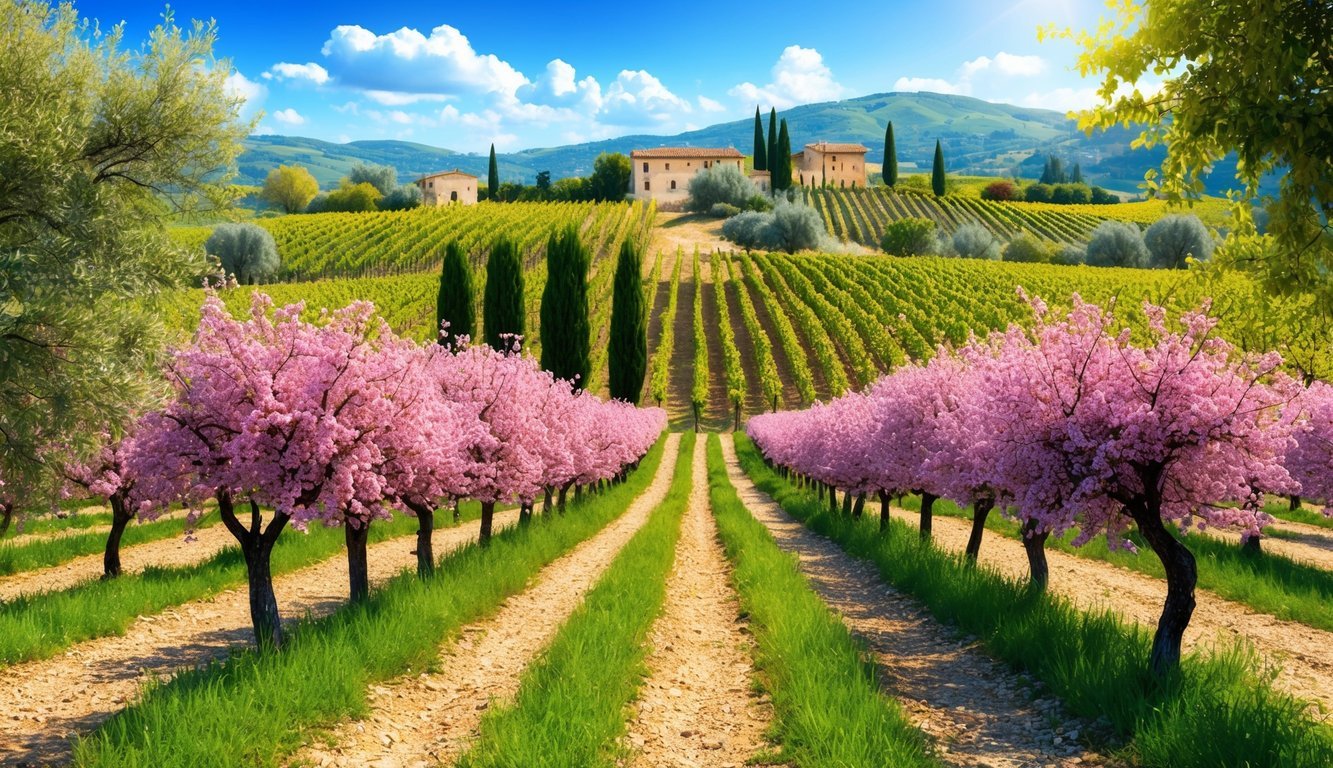If you’re planning a trip to Italy, the weather can greatly influence your experience.
Knowing which months offer the best weather helps you make the most of your visit.
From sunny days perfect for exploring historic sites to comfortable evenings enjoying local cuisine, the right time can enhance your entire journey.
Each season in Italy has its unique charm, but some months stand out for their delightful climate.
Whether you’re after warm beach days or pleasant city strolls, this guide highlights the six months that offer ideal weather conditions for your adventure in this beautiful country.
Understanding Italy’s Climate
Italy has a diverse climate due to its varied geography.
Knowing the climate can help you plan the best time to visit.
Different regions experience different weather patterns, influenced by mountains, plains, and the Mediterranean Sea.
Regional Climate Variations
Italy’s climate changes drastically from north to south.
-
Northern Italy (e.g., Milan, Venice): You’ll find a continental climate with cold winters and warm summers. Rain is common in spring and autumn.
-
Central Italy (e.g., Rome, Florence): This area enjoys a Mediterranean climate. Winters are mild and summers can be hot. Spring and fall bring pleasant temperatures and lower crowds.
-
Southern Italy (e.g., Naples, Sicily): Expect a Mediterranean feel here with warm summers and mild winters. This region has less rain and plenty of sunshine, making it great for beach time.
Each region’s climate affects travel plans, so consider what activities you want during your visit.
Impact of Geography on Weather
Italy’s geography plays a big role in its weather patterns.
-
Mountains: The Apennines and Alps create barriers that influence rainfall. The western slopes are wetter, while the eastern parts are drier.
-
Coastline: The coastal areas have milder winters and cooler summers thanks to the nearby sea. This makes them popular among tourists seeking pleasant weather.
-
Inland Areas: Regions further from the coast can experience extreme temperatures. They may have hot summers and cold winters, often with less humidity.
This mix of geography ensures that you can find a perfect getaway, no matter what time of year you choose to visit Italy.
The Charm of Seasonal Changes

Italy’s seasons offer unique charms that enhance your travel experience.
From the vibrant blooms of spring to the colorful leaves of autumn, these seasonal shifts create unforgettable moments.
Spring Blossoms and Mild Weather
Spring in Italy is a breathtaking time filled with vibrant flowers and mild temperatures.
As you explore the countryside, you’ll find fields of blooming wildflowers, especially around Tuscany and the Amalfi Coast.
The pleasant weather, typically ranging from 50°F to 70°F, makes it perfect for outdoor activities.
You can enjoy seasonal festivals celebrating local culture and traditions.
Cities like Florence come alive with art exhibits and outdoor markets.
Don’t forget to try regional spring dishes featuring fresh ingredients, like asparagus and artichokes.
April and May are particularly delightful, with fewer crowds, allowing for a more relaxed visit.
Autumn Splendor and Crisp Air
As summer fades, autumn paints Italy in rich shades of orange and gold.
The air becomes crisp, and temperatures reach a comfortable 60°F to 75°F, ideal for sightseeing.
This season is harvest time, so you’ll experience food festivals celebrating wine and local produce.
Exploring vineyards in regions like Piemonte or Tuscany offers a chance to taste freshly pressed olive oil and local wines.
Autumn also brings vibrant festivals, from grape stomping events to harvest fairs.
The scenic beauty of places like Lake Como during this time makes it a must-see, with stunning reflections in the water.
Frequently Asked Questions

Planning a trip to Italy brings up a lot of questions about the weather and the best times to visit.
Here are some answers to help you get ready for your Italian adventure.
What’s the scoop on the best weather months for an Italy trip?
The best months for weather in Italy are usually April, May, September, and October.
These months feature mild temperatures and fewer crowds.
Enjoy exploring beautiful scenery without the harsh summer heat.
Looking for a deal? When’s the cheapest time to fly to Italy?
If you’re after the best airfare deals, consider flying during the off-peak months, like late fall and winter.
January and February often have lower ticket prices.
Just keep in mind that the weather might be chilly during those months.
When does Italy get super hot?
Italy tends to get very hot in July and August.
Temperatures can soar above 30°C (86°F) in many regions.
Cities like Rome and Florence can feel particularly warm, so consider visiting in the cooler months if heat isn’t your thing.
What time of year does Italy turn into a rain fest?
Rainy months in Italy are generally from October to December.
Some areas can experience heavy downpours, especially in November.
If you’re visiting during this time, it’s good to be prepared with an umbrella.
Planning a vacay to Italy, but curious about their seasons – when do they change?
Italy’s seasons change like this: spring runs from March to May, summer from June to August, fall from September to November, and winter from December to February.
Each season brings different charms, so pick your favorite!
Should I pack a coat or shades? What’s Italy like in October?
In October, the weather can be quite pleasant, but it also starts to cool down.
You might want to bring layers.
Some days could be warm, while nights can get chilly.
So, a light coat and some sunglasses would be a good choice.

